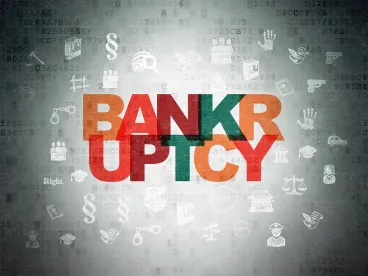In Metropolitan Government of Nashville & Davidson County v. Hildebrand, the Sixth Circuit explains how to read the phrase “applicable nonbankruptcy law” as used in the Bankruptcy Code. The chapter 13 individual bankruptcy case discussed the phrase in the context of 11 U.S.C. § 511(a), which provides that the appropriate interest rate for tax claims is whatever “applicable nonbankruptcy law” provides.
The decision
The case involved a Tennessee statute that purported to avoid the general prohibition against postpetition penalties (rather than interest) on tax claims with the following language: “For purposes of any claim in a bankruptcy proceeding pertaining to delinquent property taxes, the assessment of penalties pursuant to this section constitutes the assessment of interest.” Tenn. Code Ann. § 67-5-2010(d). The Sixth Circuit rejected application of this statute, holding that the plain language of the phrase “applicable nonbankruptcy law” refers to “any law that is not aimed solely at bankruptcy proceedings.”
The Sixth Circuit based its ruling on its prior rulings acknowledging that states have concurrent authority to pass bankruptcy laws, and that the content of this particular Tennessee statute was clearly aimed only at bankruptcy proceedings. The Court further noted that if Congress intended for section 511(a) to mean any law other than the Bankruptcy Code, then it could have easily used other language to convey that intention (e.g., “laws outside the Bankruptcy Code”). Indeed, many other Bankruptcy Code sections use other variations of the phrase, like “applicable law” in section 365(c)(1)(A) and “applicable provisions of this title” in section 1129(a)(1) and (a)(2). To determine whether a specific law is a “nonbankruptcy” law, the Sixth Circuit’s ruling says to look to the content of the law itself, not who enacted the law or where it can be found.
Future application
Hildebrand clarifies that we cannot assume that references in the Bankruptcy Code to applicable nonbankruptcy law simply means any applicable law outside of the Bankruptcy Code. State laws can thus be “bankruptcy” laws depending upon their content—an important distinction when counsel is faced with an otherwise unfavorable “applicable law” outside of what is strictly contained in the Bankruptcy Code.
Consider, for example, a state statute permitting a sale of assets free and clear of liens, but only if the sale is through a bankruptcy proceeding. Would that statute be considered “applicable nonbankruptcy law,” such that a debtor could argue it has met the standard for a sale free and clear of liens under section 363(f)(1) of the Bankruptcy Code and that it does not need to obtain consent under section 363(f)(2) or demonstrate the existence of other circumstances delineated under section 363(f)? Under the Sixth Circuit’s ruling, such a statute would likely be considered a bankruptcy law because its content is focused on bankruptcy.
The Sixth Circuit’s decision is relevant to both chapter 13 and chapter 11 reorganizations, and anywhere in the Code that refers to non-bankruptcy law, such as issues related to a debtor’s power to sell assets free and clear of liens (section 363(f)), a debtor’s inability to assume contracts and leases (section 365(c)), and the enforceability of subordination agreements (section 510(a)).




 />i
/>i
